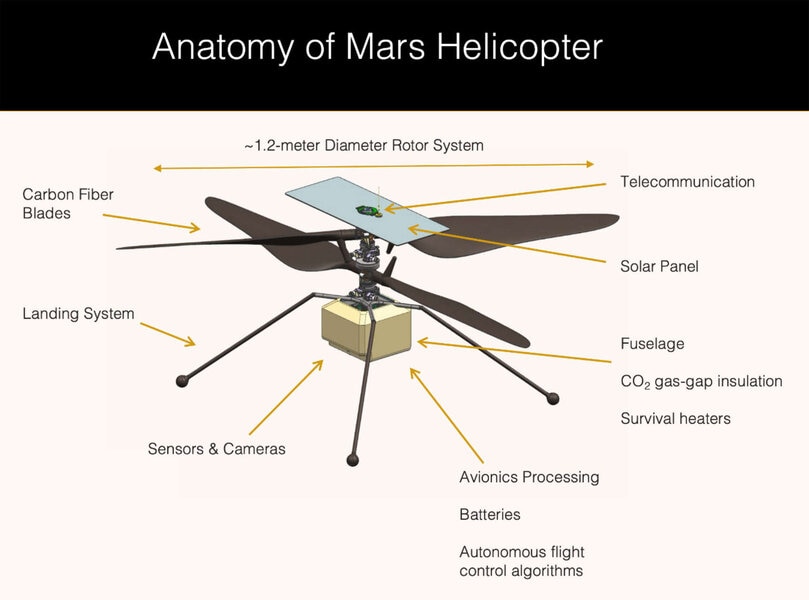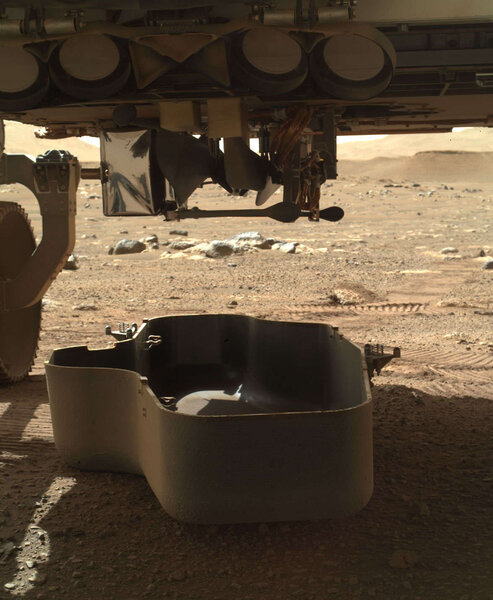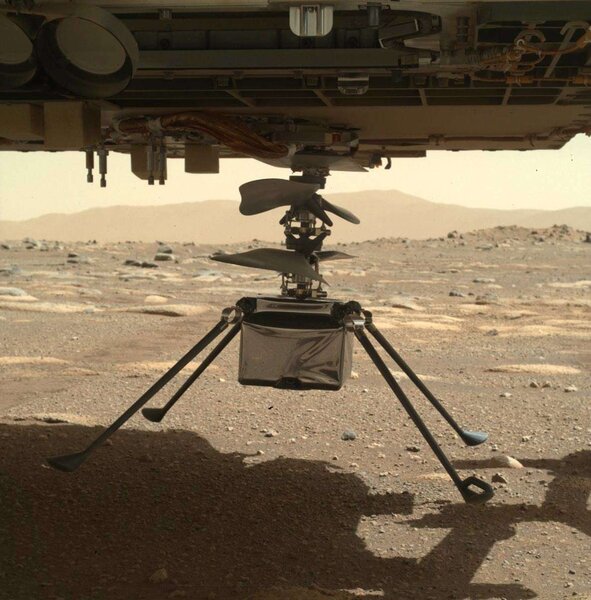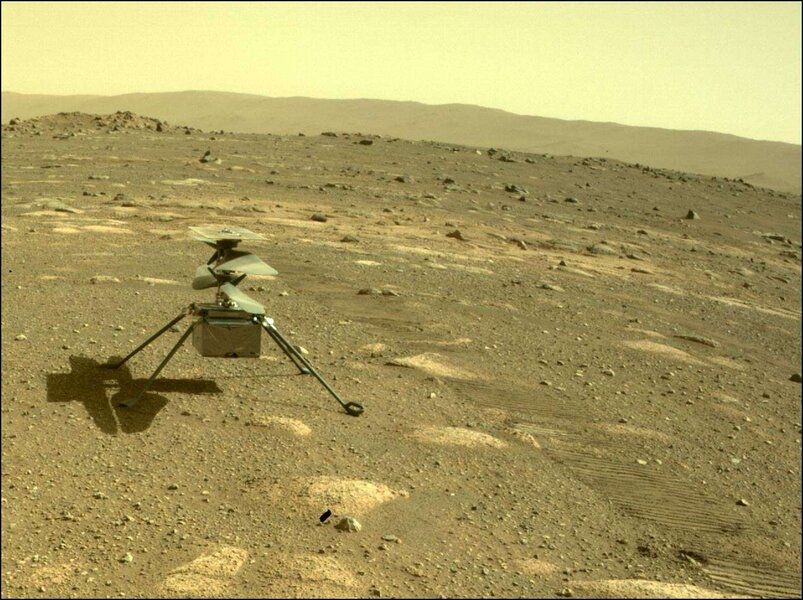Create a free profile to get unlimited access to exclusive videos, sweepstakes, and more!
Mars copter Ingenuity prepares to take the first powered flight on another world
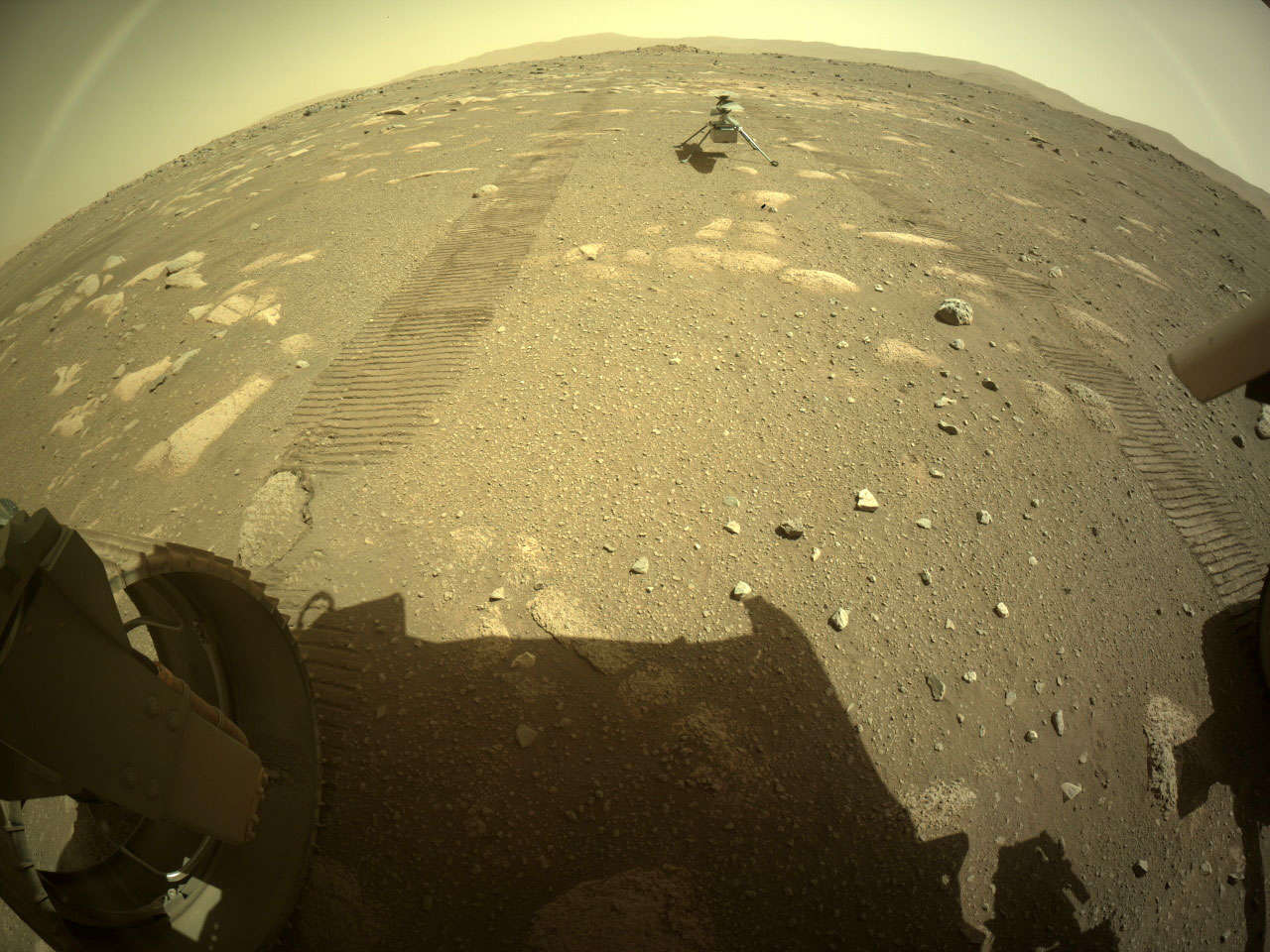
Over Easter weekend, the Mars Perseverance rover dropped its own egg: It deployed the Ingenuity helicopter, a drone that will attempt the first powered atmospheric flight on another planet.
Oh yeah. The future is here.
The copter is called Ingenuity, and it's a technology testbed, which means it's designed to test out various engineering hardware components as opposed to doing scientific research.
It's quite small, standing about half a meter high and with a mass of just 1.8 kilograms (so it weighs about 1.5 pounds in the lower gravity of Mars). The fuselage is a rectangular box about the size of two hefty hardcover books stacked on top of each other (20 x 14 x 16 centimeters) and it contains the avionics, the electronic systems that control the craft.
The lift is provided by a pair of counter-rotating carbon fiber blades (one spins clockwise, the other counterclockwise) stacked on top of each other. They span about 1.2 meters and will rotate at an amazing 2,400 RPM, which on Mars means the tips will be moving at 0.7 times the local speed of sound! The atmosphere of Mars is around 0.6% the pressure of Earth's at sea level, and that thin air means the blades have to work much harder to get Ingenuity airborne.
There's a solar panel mounted on top of the blades that recharges a set of lithium-ion batteries, and the whole thing sits on four spindly carbon-fiber landing legs. It has two cameras on board; one is color and mounted to look out horizontally, and the other grayscale which looks downward for navigation.
It was stowed under the belly of Perseverance during the 470 million-km flight to Mars and protected by a debris shield during landing and initial roving. On March 21, 2021 the debris cover was dropped, revealing Ingenuity tucked in sideways under the rover. A series of coordinated steps were then executed to rotate the copter vertically and then drop it the last remaining ten centimeters to the Martian surface.
After that, Perseverance moved off to let Ingenuity get a taste of open air, and that's where we are today. It took this long to get it set up to make sure the rover was in a wide-open spot for the flights so the copter can safely take off and land. Before that happens Perseverance will move off about a hundred meters or so to make sure it's safe as well.
And when will this all happen? The first flight is scheduled for no earlier than April 11, this coming Sunday, with the data sent back to Earth the next day. It may be a day or two after that, depending on how comfortable the engineers here on Earth are with Ingenuity's prep work and check out. That first test will be fairly simple: a vertical takeoff reaching a target height of three meters, hovering there for 20 seconds, and then touching down again.
Each flight will be more ambitious than the last. The hope is that it will eventually take 5 or 6 flights, going up 5 meters and flying for 50 meters or so, though it can go as far as 300 meters. Each flight will last about 90 seconds, which is as much power as the batteries provide.
Ingenuity has to be autonomous. It can't be controlled in real time from Earth due to our distance from Mars; at the speed of light commands take nearly 15 minutes just for a one-way trip! So it has to keep track of its flight, position, velocity, energy use, communication with the rover, and even its temperature (it has to keep itself warm; Mars is chilly even in spring) all on its own.
Navigation is an issue. Mars doesn't have a strong magnetic field, so any sort of compass can't be used. Instead, it will use the position of the Sun to get its heading, and use images of the ground beneath it to get its position.
If this works, NASA will be able to build bigger and more capable drones that can travel much farther and be used for aerial reconnaissance, covering a lot more territory more quickly than rovers, providing higher resolution images and topographical data than orbiting spacecraft, too (though over a smaller region).
Mind you, the first rover on Mars, Sojourner, was only 12 kilograms and a bit over half a meter long. Now the rovers are the size of mini Coopers and mass over a ton. Something has to be first and when you're going to Mars it's best to keep it a bit simple for that pioneer. Much bigger things will come.
Much bigger. First things first, though.
And oh, one more thing: Stored on board Ingenuity is a small piece of fabric. Why? It's from the Wright Flyer, the Wright brothers' airplane that achieved the first powered flight on Earth.
How wonderful, how inspiring, how human it is that this should be on the machine that will perform such a flight on another world.
Bon Voyage and good luck, Ingenuity. We're all counting on you.
